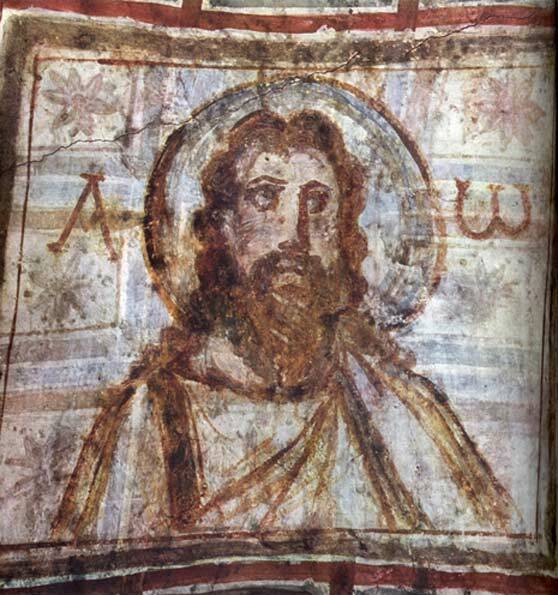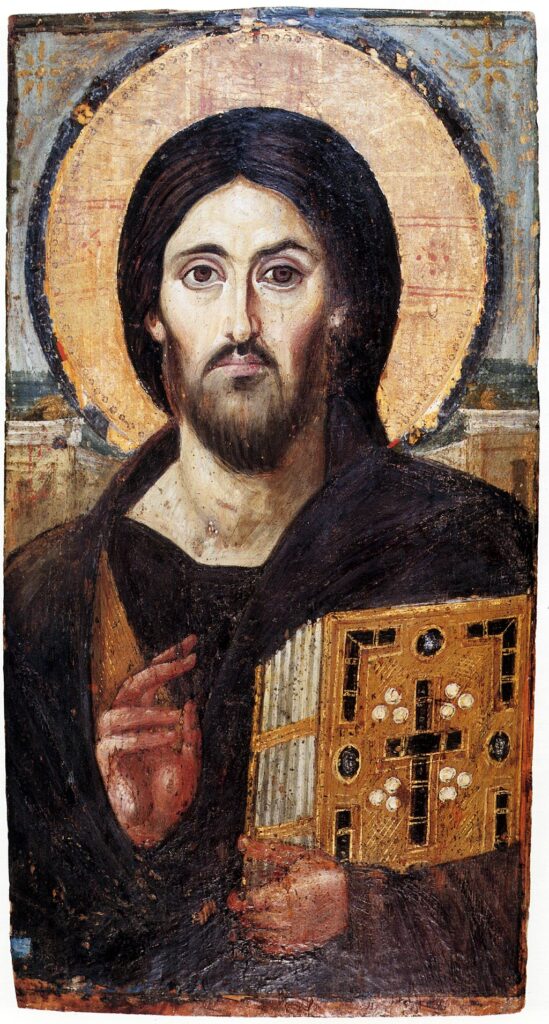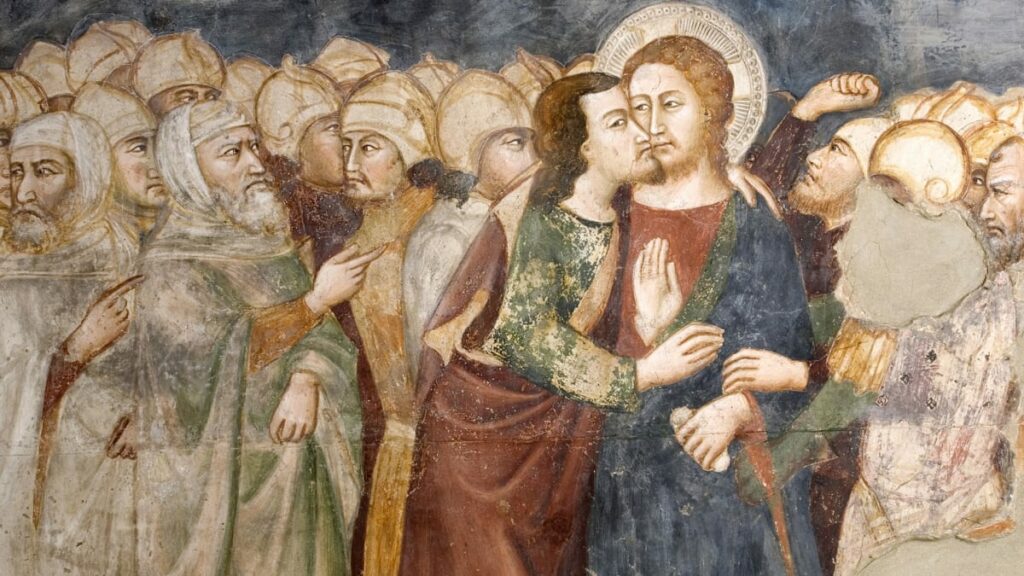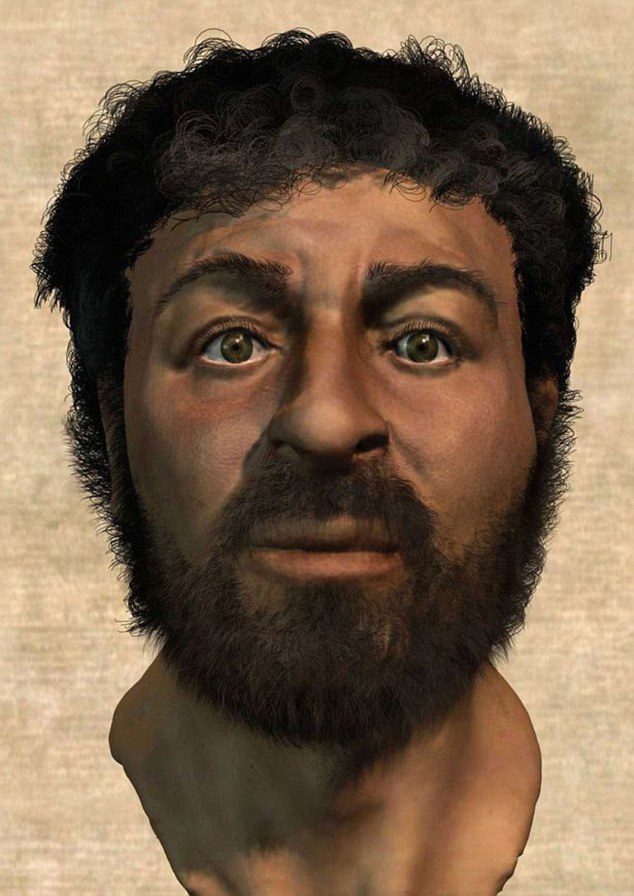When you close your eyes and imagine Jesus, what comes to mind? Most likely, it’s a white man with long brown hair, a beard, and bright blue eyes. Maybe his arms are outstretched with the sleeves of his white robe hanging down.
Maybe there’s a halo around his head. This is more or less the image of Jesus that most of us have grown up with; it’s the one that’s found in nearly every painting of Jesus.
But according to history, science, and the Bible, it’s also an image that’s probably completely wrong.
The Origins of Our Modern Jesus
Where did we go so wrong in our depictions of Jesus? The answer lay in the 4th century AD when Byzantine artists started painting him.
The Byzantine Empire was the eastern portion of the former Roman Empire, and it continued to function for centuries after Rome fell.
Byzantium was also the center of Orthodox Christianity; religious art and iconography flourished within its borders.

But the Byzantine artists who drew Jesus were more interested in something other than realism.
Instead, they used symbols to reflect his divine power and authority. They painted him in the style of the Greek gods, dressing him in ornate clothing and seating him on a throne.
They also gave him long, luxurious locks of hair, something that was typical for depictions of deities.
Subsequent artists imitated the Byzantine version of Jesus, giving us works such as Da Vinci’s Last Supper, which similarly shows Jesus as a white man with long, flowing hair.
That image of Jesus remained popular for centuries.

Jesus for Americans
In 1940, the white, long-haired Jesus got an update for his American audience when Warner Sallman painted him with light-colored hair, blue eyes, and a piercing gaze.
Sallman was a commercial artist and advertiser who used his connections to put Jesus’ face on everything from postcards to church bulletins to buttons and stamps.
His most famous painting, Head of Christ, was reproduced 500 million times and even given to soldiers during WWII.

Sallman’s goal had been to create a new image of Jesus that matched his own views of what the son of God should look like.
Decades later, it’s hard to say that he hasn’t succeeded. We’ve been flooded with an image that reflects more the culture that Sallman lived in than anything resembling historical reality.
But perhaps that shouldn’t come as a surprise. Considering how important Christianity has been to so many cultures, it’s only natural that his image would reflect the people painting him.
Whether it’s an artist in 16th century Ethiopia or 17th century India, Jesus’ features change to match the imagination of whoever is holding the brush.
Jesus Is Rarely Described in the Bible
Unfortunately, coming up with an accurate idea of what Jesus really looked like is tricky because the Bible does not dedicate many lines to his physical appearance.
The best descriptions we have of him come from the Gospels of Matthew, Mark, Luke, and John.
Reading these books of the Bible, we can gather that Jesus was around 30 years old when he started preaching.
He also grew up in Nazareth, a town in Galilee, a region now split between northern Israel and southern Lebanon.
One important passage describing Jesus’ appearance is from Revelations 1:14-15.
These two verses state that his hairs “were white as white wool, white as snow. His eyes were like a flame of fire, his feet were like burnished bronze, refined as in a furnace.”
Few other passages are as descriptive as this one, however, and so we’re often left reading between the lines.
For example, we can be fairly certain that Jesus did not wear a long white robe as is often depicted in paintings.
How do we know?
In Mark 12:38-39, Jesus says, “Beware of the scribes, who desire to walk in long robes (stolai), and to have salutations in the marketplaces, and have the most important seats in the synagogues and the places of honor at banquets.”
As historian Joan Taylor explains, when Jesus is quoted in the Bible, it usually indicates that it’s something he really said. Thus, we can assume that he did, in fact, avoid wearing long robes.
We also know that Jesus did not have eye-catching features that would draw attention to him. That is, he probably was not strikingly handsome, nor would he have had any kind of unusual marks or deformities.
We can draw that conclusion from Matthew 26:47-56. In these verses, when Judas arrives at the garden of Gethsemane to betray Jesus, he identifies Jesus to the soldiers by walking up to him and kissing him as a sign.

This implies that people didn’t readily recognize the holy man based on his appearance alone.
Since the descriptions of Jesus’ appearance are so scant, how do we get closer to the truth?
The answer is that we have to turn to historical context to fill in the rest of the details.
As I’ve mentioned, Jesus was most likely in his 30s and hailed from the region that is today part of northern Israel (formerly Palestine).
The question is: What did a 30-year-old Jewish man from that region look like in Jesus’ time?
What History Reveals About What Jesus Looked Like
Let’s start by talking about Jesus’ face. Most of the depictions of Jesus show a bearded man.
Would this have been historically accurate? Probably. But it’s doubtful that he would have had a particularly long beard, as many paintings would have you believe.
A short beard was a common look for philosophers in that time period. It was a way for thinkers to show that they could have focused more on day-to-day preoccupations such as shaving.
This was in contrast to the male norm of keeping one’s face clean-shaven, which was seen as an important part of being a respectable citizen.
Another reason Jesus likely had a beard was that he spent so much time wandering.
Being frequently on the road, Jesus would not have had a lot of contact with barbers and thus would have inevitably had facial hair during many of his travels.
As for the long, luxurious hair that painters like to give him, that is almost certainly inaccurate.
Long hair was often found in representations of ancient deities, which is probably why so many artists chose to give Jesus long hair as well; however, it was not seen as appropriate for most men.
In 1 Corinthians 11:14, Paul even says, “Doth not even nature itself teach you, that, if a man have long hair, it is a shame unto him?” It’s safe to assume that Paul probably wouldn’t have said something like that if Jesus had had long hair.
Finally, there’s the color of Jesus’ skin and hair. Although Jesus most likely did have brown hair, his skin was probably not the pale white that is usually depicted in paintings.
Think about it. Jesus lived in what is today the Middle East. So his skin naturally would have been several shades darker. Similarly, the blue eyes painters are so fond of would have been out of the question.
Science Provides More Clues About Jesus’ Appearance
Fortunately, advances in technology have aided in clearing up the question of what Jesus really looked like.
Knowing that he probably had dark eyes, dark hair, and tan or olive-hued skin, researchers have used forensic anthropology to recreate images of what a typical Judean man his age would have looked like.
In 2001, Richard Neave and a team of British forensic experts used data gathered from Jewish skulls in the region to piece together what the average Jewish man might have looked like in Jesus’ time.

Neave is a medical artist who has recreated the faces of several of history’s most well-known figures.
When it came to Jesus’ face, he used a method known as tomography, in which he took X-ray “slices” of the Jewish skulls he had gathered and used a computer to analyze their dimensions in detail.
He then used those measurements to create a digital composite of a face.
The results? A man with a wide face, dark hair and complexion, and a short, bushy beard. A far cry from the long-haired Jesus that stares down from the walls of most church hallways and sanctuaries.
Of course, this was an image based on several different skulls and was not meant to be a true representation of Jesus’ face. However, it does bring us closer to the real Jesus of Nazareth, a man whose words and actions have touched millions of people but whose face will probably always remain a mystery.

